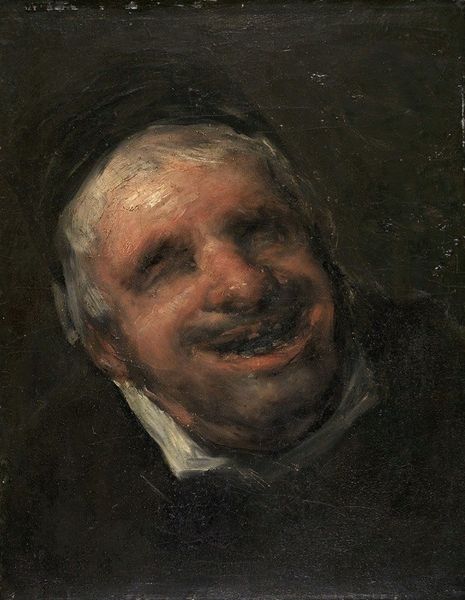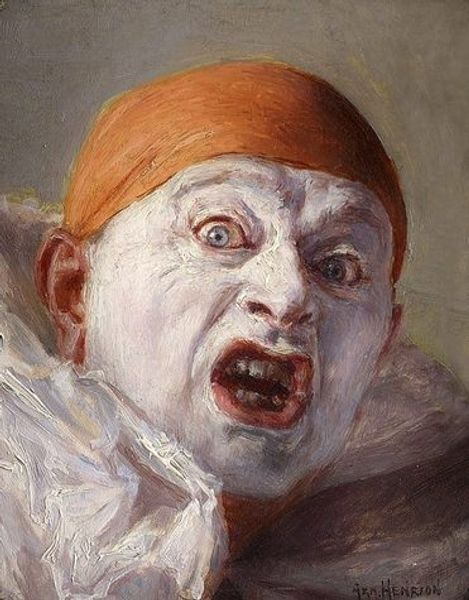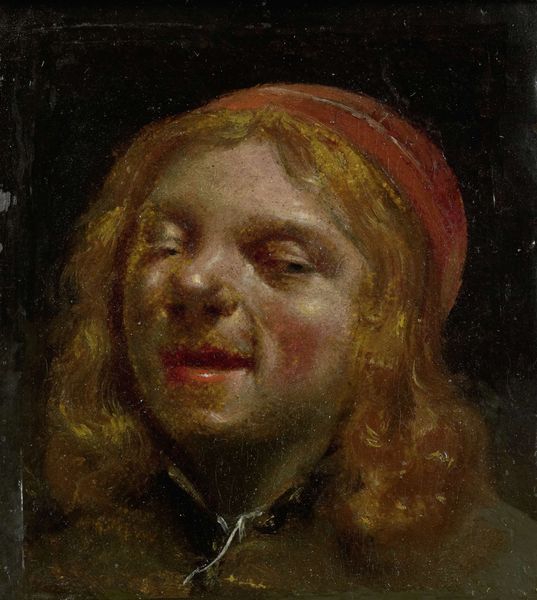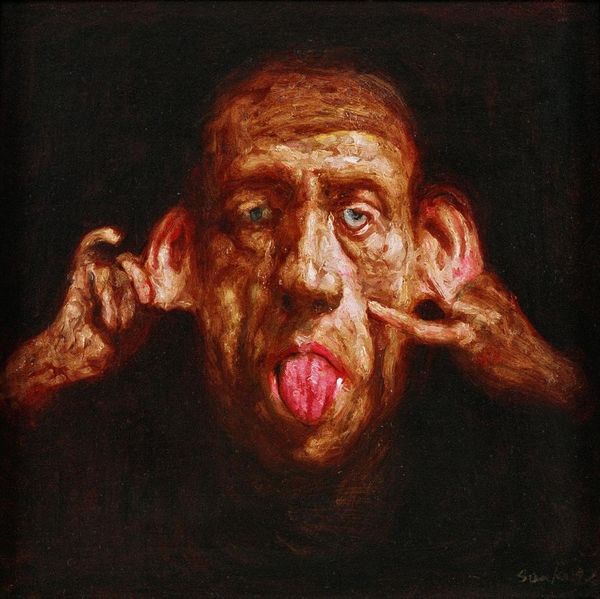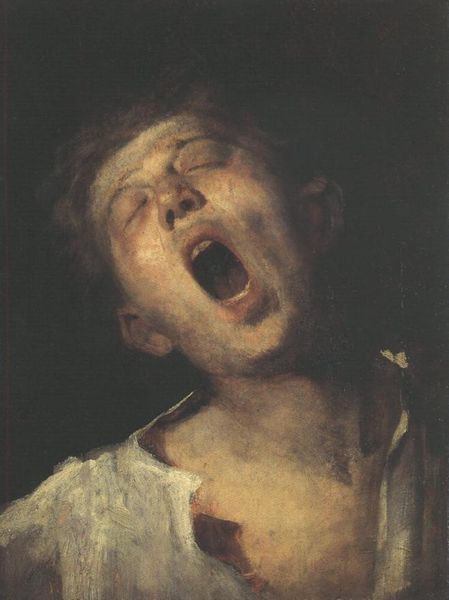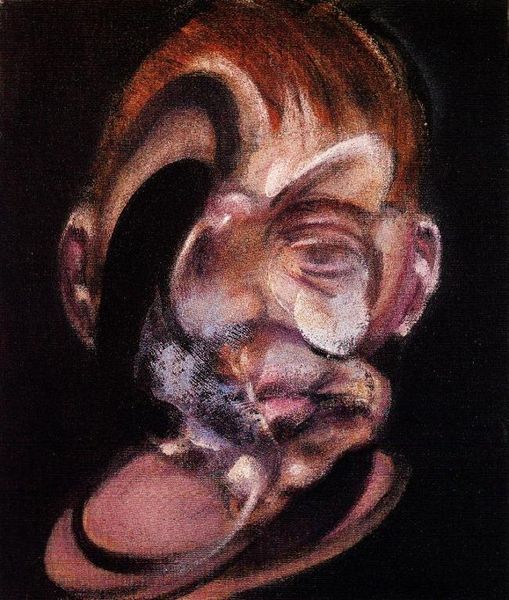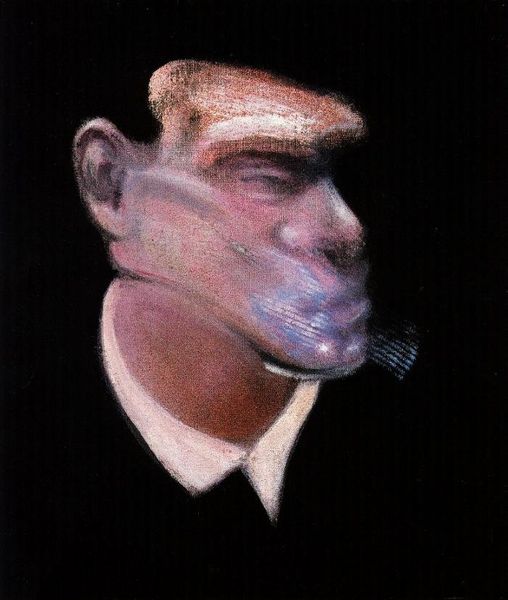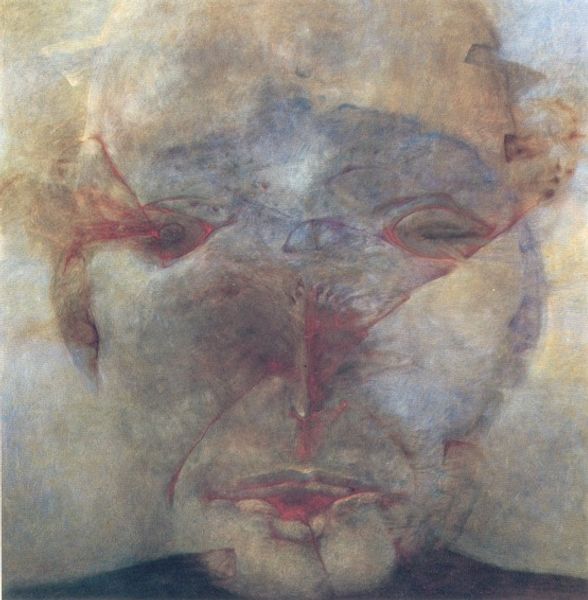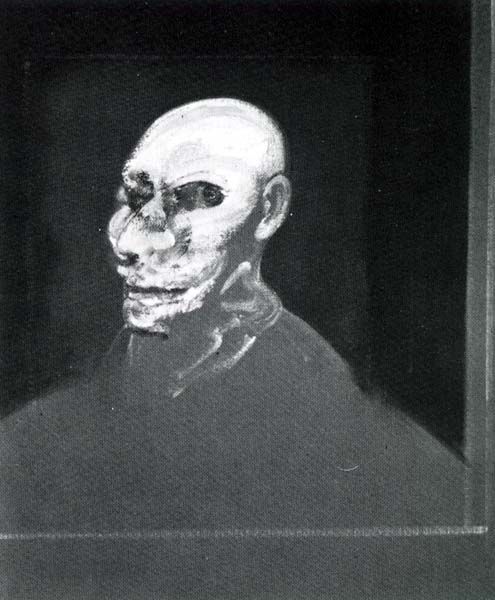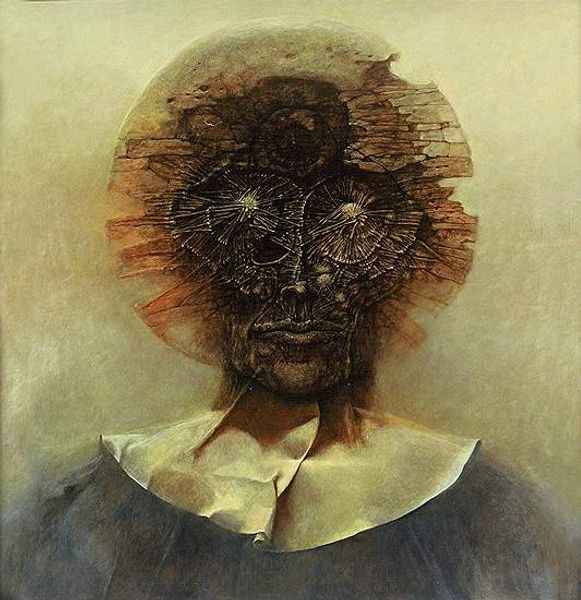
drawing, charcoal
#
portrait
#
drawing
#
self-portrait
#
head
#
face
#
charcoal drawing
#
male portrait
#
portrait reference
#
male-portraits
#
portrait head and shoulder
#
romanticism
#
human
#
animal drawing portrait
#
portrait drawing
#
charcoal
#
facial portrait
#
portrait art
#
fine art portrait
#
realism
#
digital portrait
Dimensions: 39.1 x 31.1 cm
Copyright: Public domain
Editor: Here we have Francisco Goya’s “Tio Paquete,” created around 1820 using charcoal. The intense contrast and the subject's almost manic grin are quite unsettling. What's your take on this unusual portrait? Curator: The emotional charge is palpable, isn't it? Consider Goya's sociopolitical context: a Spain riddled with conflict and repression under Ferdinand VII. Doesn't this image seem to push against conventional portraiture? Is it really celebrating the individual, or is it unmasking something darker about power and societal expectations? Editor: I hadn't thought about it in that way, but that reading resonates! It does feel like there’s a commentary embedded here. The exaggerated features and the darkness… almost a caricature. Curator: Exactly. What do caricatures often do? They amplify certain traits, often to critique. Goya lived through immense upheaval, witnessing firsthand the French Revolution's ideals morph into Napoleonic oppression, and then the restoration of a reactionary monarchy. How might those experiences be manifesting themselves here, even unconsciously, in his rendering of an everyday face? Editor: So it's not just a likeness; it's a reflection of Goya's own disillusionment with the state of affairs. The smile feels almost like a grimace of despair. Curator: Precisely. And in considering such a possibility, does the work open up new paths for us? Are we not simply encountering a likeness, but also engaging with questions of identity and lived experience that can inspire our own perspectives of society? Editor: Absolutely. I initially saw a disturbing image, but now I appreciate the social commentary and the emotional depth that are tied to the artwork. Curator: Yes, and by bringing contemporary ideas of identity and politics, we make the past visible with even more impact, don’t you agree?
